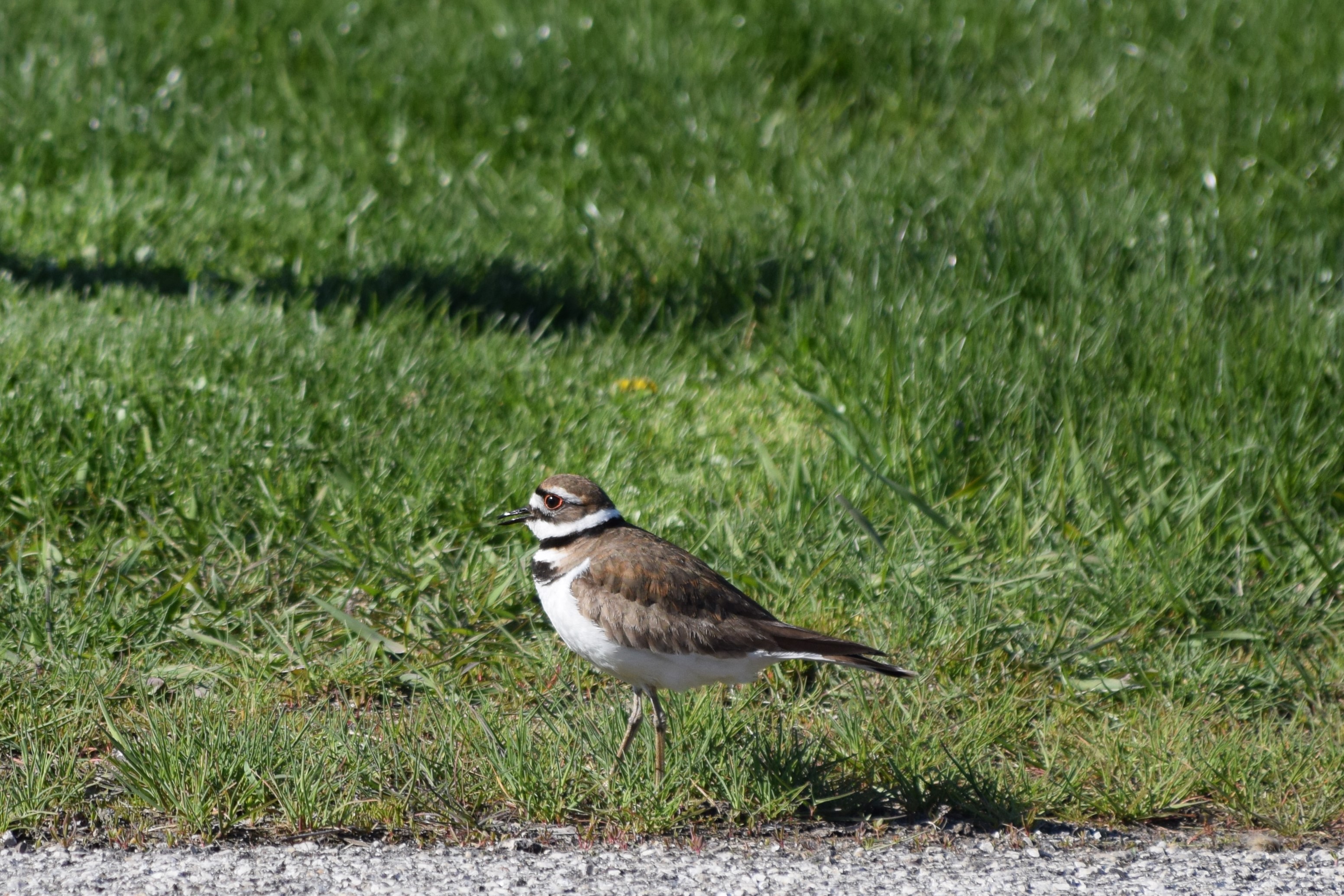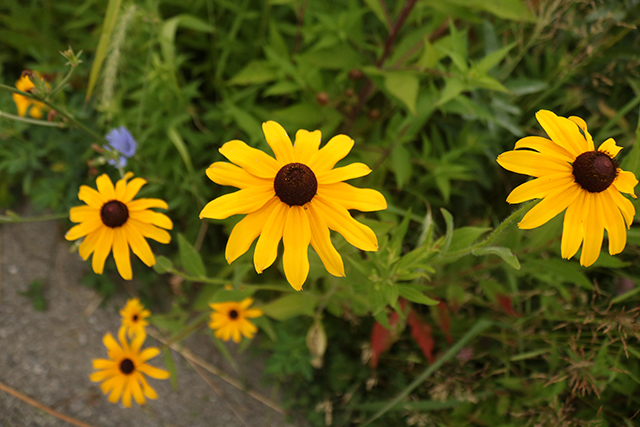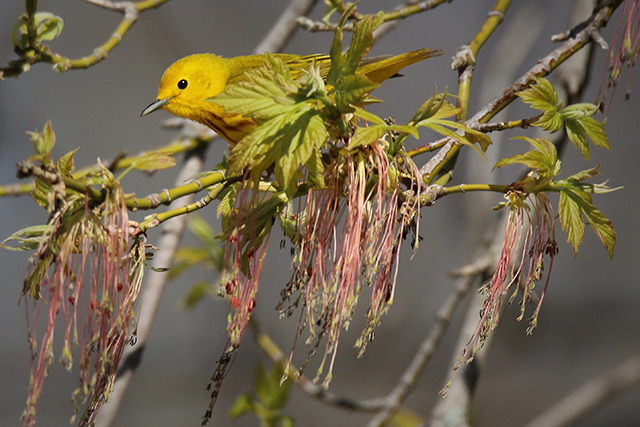The American Robin took second with 31 observations. Some species that were only identified once were a Killdeer, Wild Strawberry and Pussy Willow. Spring will come again so be sure to keep your eye out for them next year! Feel free to search on iNaturalist and then join the “Spring Phenology in Milwaukee 2020” project if you want to see a full list of the results and observations. With the spring phenology (responses of plants and animals to changes in seasonal and climate) challenge wrapped up, we are now starting the summer phenology challenge on June 1st that will run until September 1st. Please join us as we document summer with another list of plants and animals.

Killdeer spotted at Washington Park. Photo by Alex LaBonte, UEC Environmental Educator
We will be using iNaturalist where you can record and submit your data for this challenge. Just make sure that you take a picture in Milwaukee County and that it is one of our summer phenology challenge species! Otherwise, you are welcome to join the “Summer Phenology in Milwaukee 2020” project on iNaturalist if you want to follow along. You can find directions on what iNaturalist is and how to get started with it with this blog. We hope you are able to participate in this summer phenology challenge! Here is our list of Summer Phenology Species that you can spot in your own backyard or window! If you want to do research ahead of time, you can find many images of these species online to prepare yourself.
Plants:
Allegheny serviceberry (Amelanchier laevis) flowering and berries
Big blue-stem (Andropogon gerardii)
Black-eyed susan (Rudbeckia hirta)
Blue flag iris (Iris virginica)
Calico aster (Symphyotrichum lateriflorum)
Canada goldenrod (Solidago canadensis)
Canada tick-trefoil (Desmodium canadense)
Canada wild-rye (Elymus canadensis)
Common milkweed (Ascelpias syriaca)
Compassplant (Silphium laciniatum)
Daisy fleabane (Erigeron annuus)
Dotted horsemint (Monarda punctata)
Monarda/ bee balm (Monarda fistulosa)
Pale purple coneflower (Echinacea pallida)
Penstemon/ tall beard-tongue (Penstemon digitalis)
Prairie blazingstar (Liatris pycnostachya)
Prairie spiderwort (Tradescantia occidentalis)
Purple prairie clover (Dalea purpurea)
Red osier dogwood (Cornus sericea) flowering and then berries
Side-oats grama grass (Bouteloua curtipendula)
Wild geranium (Geranium maculatum)
Yellow coneflower (Ratabida pinnata)

Black-eyed susan (Rudbeckia hirta). Photo by Rylee Thorson, UEC Marketing Intern.
Animals:
*Any Bat Sighting
Baltimore Oriole
Barn Swallow
Bumble Bees
Cabbage white
Candy-striped Leafhopper
Cicada
Common Green Darner
Common Yellowthroat
DeKays Brownsnake
Gray Catbird
Indigo Bunting
Monarch Caterpillars
Painted Lady
Painted Turtle
Panfish
Snapping Turtle
Tadpoles
Widow Skimmer
Yellow Warbler

Yellow Warbler. Photo by Bruce Halmo, Research and Community Science Volunteer.
*Email This email address is being protected from spambots. You need JavaScript enabled to view it. with your sighting if you happen to see a bat prior to May 15th as they are nearly impossible to capture a photo of during the night.
If you are interested in contributing general phenology data specifically at our Urban Ecology Center branches, you can search and then join the “Urban Ecology Center Phenology” to contribute data to this long term project. Remember, you must have taken the photo within the park boundaries or it won’t get filtered into the Urban Ecology Center Phenology project.
For further explanation and instructions about using iNaturalist, check out the Getting Started guide. Or check out their video tutorial guide for a more thorough explanation!
As of last reminders:
- Please always stay on the trails and never pick, dig up or remove any plants! The trampling of vegetation is illegal according to the Milwaukee County Parks ordinance.
- Please practice - Leave No Trace.
- Please abide by CDC social distancing guidelines and maintain a distance of more than 6 feet apart from others if you are outside.
- Lastly, have fun and we hope to see your summer time observations!





